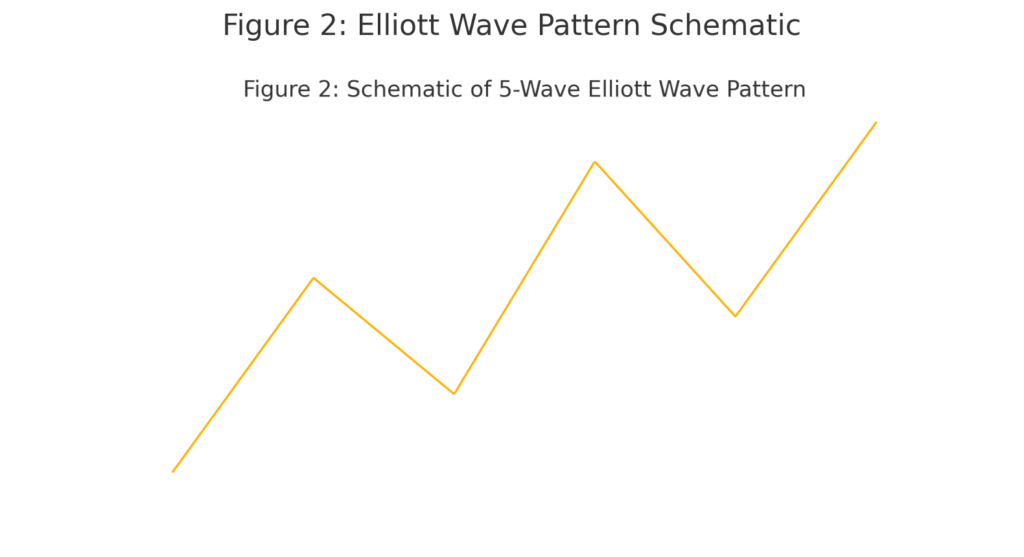
Main Points:
- John Glover (Ledn CIO) forecasts Bitcoin to reach $135,000–$140,000 by end of 2025 before a bear market in 2026.
- Current pullback near $112,000 is a healthy Elliott Wave retracement (Wave 4).
- Institutional adoption via ETFs may peak in 2025, diverging from the classic 4-year cycle.
- Macro factors—interest rates, regulatory clarity, DeFi growth—could influence peak and downturn timing.
- Practical implications: when to accumulate, how to hedge, and potential altcoin rotation opportunities.
1. Elliott Wave Analysis of Bitcoin’s 2025 Rally
John Glover, CIO of crypto lending platform Ledn, applies Elliott Wave theory to forecast Bitcoin’s trajectory. According to his analysis:
- Wave (iii) of an extended Impulse Wave (5) targets $130,000 in the coming weeks.
- A corrective Wave (iv) is expected around September 2025, dipping toward $110,000.
- Wave (v) will resume the uptrend, culminating near $140,000 by year-end 2025.
“The retracement around $112,000 is a healthy pause,” Glover explained. “Once Wave 4 completes, Wave 5 can push toward $135,000–$140,000.”
Insert Figure 2 here to illustrate the 5-wave structure.

2. Recent Price Dynamics and Market Sentiment
Over the past week, Bitcoin has retraced approximately 4%, bottoming below $112,000. Long-term holders liquidated positions around $120,000 to secure profits, compounded by a sell-off in major crypto-related equities like Strategy and Coinbase.
Institutional inflows via Bitcoin ETFs have steadily grown, but Glover argues that adoption will peak prior to 2026:
- ETF Flows: Record monthly inflows of $1.2 billion in July 2025.
- On-chain Activity: Declining exchange reserves, signaling accumulation by whales.
- Derivatives: Open interest at all-time highs, indicating elevated leverage.
Insert Figure 1 here to show the price trend over the last year.

3. Breaking the Four-Year Cycle?
Traditionally, Bitcoin’s “4-year cycle”—halving and subsequent bull/bear phases—has guided market expectations. Glover’s view suggests:
- 2025 Peak: ETF-driven demand accelerates prices ahead of history.
- 2026 Bear: Excess leverage and profit-taking usher in a protracted downturn.
- Cycle Disruption: Institutional products could decouple price action from miner-driven halving events.
This hypothesis parallels growing debate among analysts: while some forecast $250,000–$500,000 peaks in 2026, Glover warns of a sharp reversal once institutional enthusiasm fades.
4. Macro and Regulatory Considerations
Key factors that may affect the rally and subsequent correction:
- Interest Rates: A potential Fed pivot to rate cuts in late 2025 could sustain risk appetite.
- Regulatory Clarity: Final rulings on spot Bitcoin ETFs and stablecoin frameworks may boost or hamper inflows.
- DeFi Integration: Expansion of decentralized lending and staking could attract new capital—yet also increase systemic risk.
Risk managers should monitor macro data (CPI, employment figures) and regulatory announcements from the SEC, ESMA, and Asia-Pacific regulators.
5. Strategies for Crypto Investors
For readers hunting new crypto assets and revenue streams:
- Accumulation: Consider dollar-cost averaging between $115,000–$125,000 during Wave 4.
- Hedging: Use options strategies (e.g., collars or covered calls) to protect gains.
- Altcoin Rotation: Post-peak, rotate into high-potential projects in DeFi (e.g., Aave, Compound), Layer 2s (e.g., Optimism), and emerging L1s (e.g., Sui).
Conclusion
Bitcoin appears poised to test $140,000 by the end of 2025, driven by institutional demand and Elliott Wave dynamics. Yet, a bear market may begin in 2026 as profit-taking and macro headwinds surface. Strategic accumulation and risk management will be essential for navigating this cycle, while altcoin opportunities could offer alternative upside once the rally matures.

